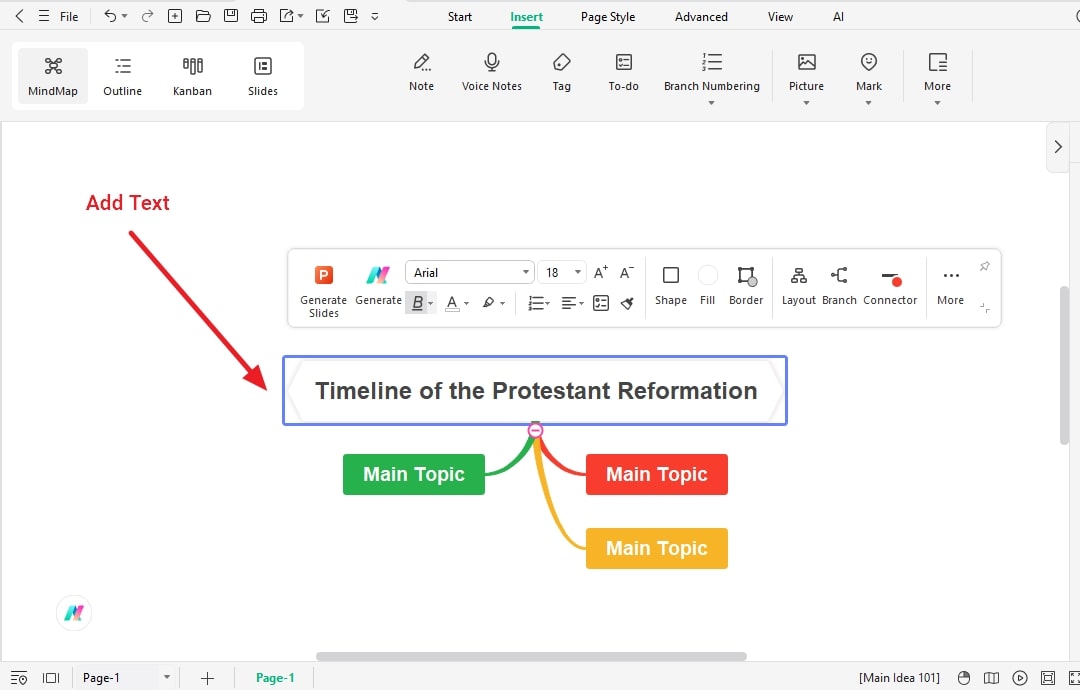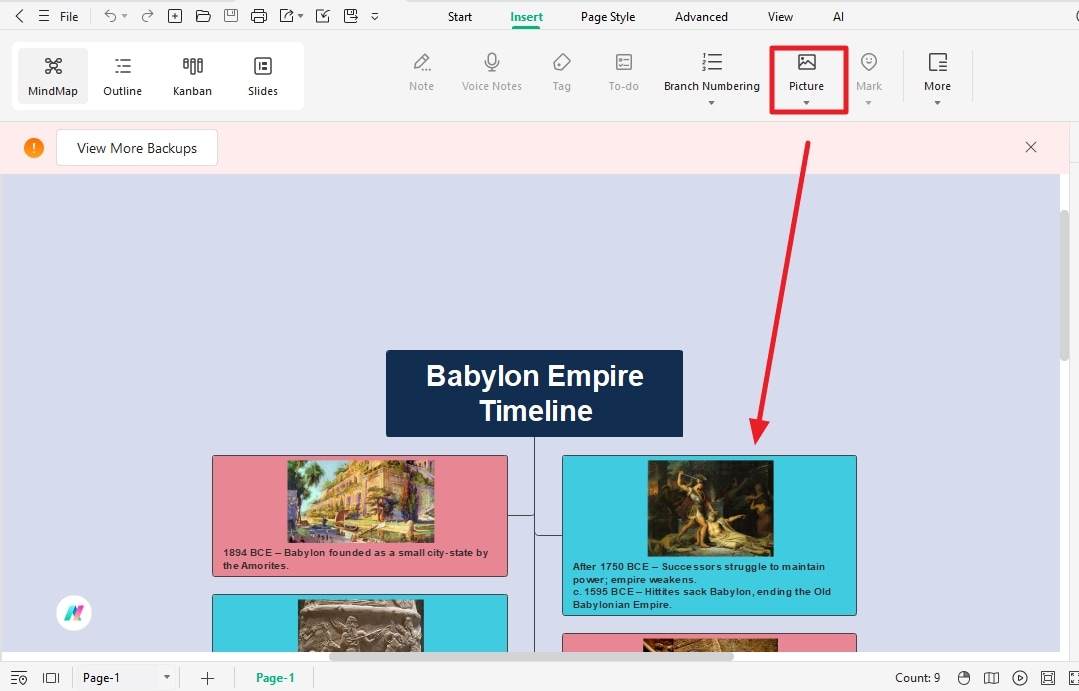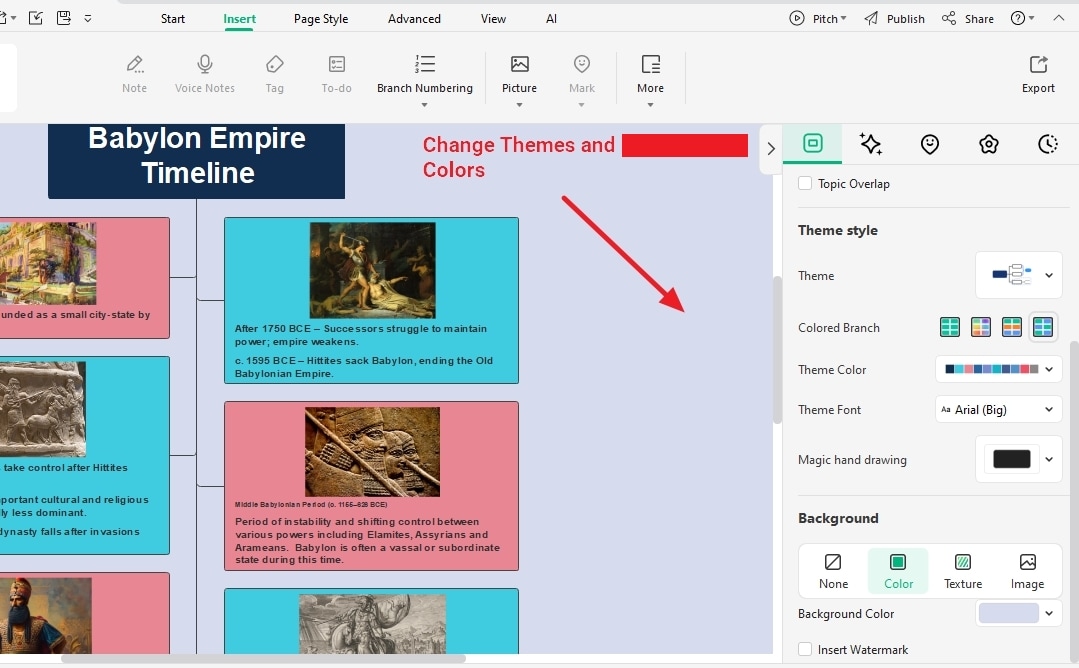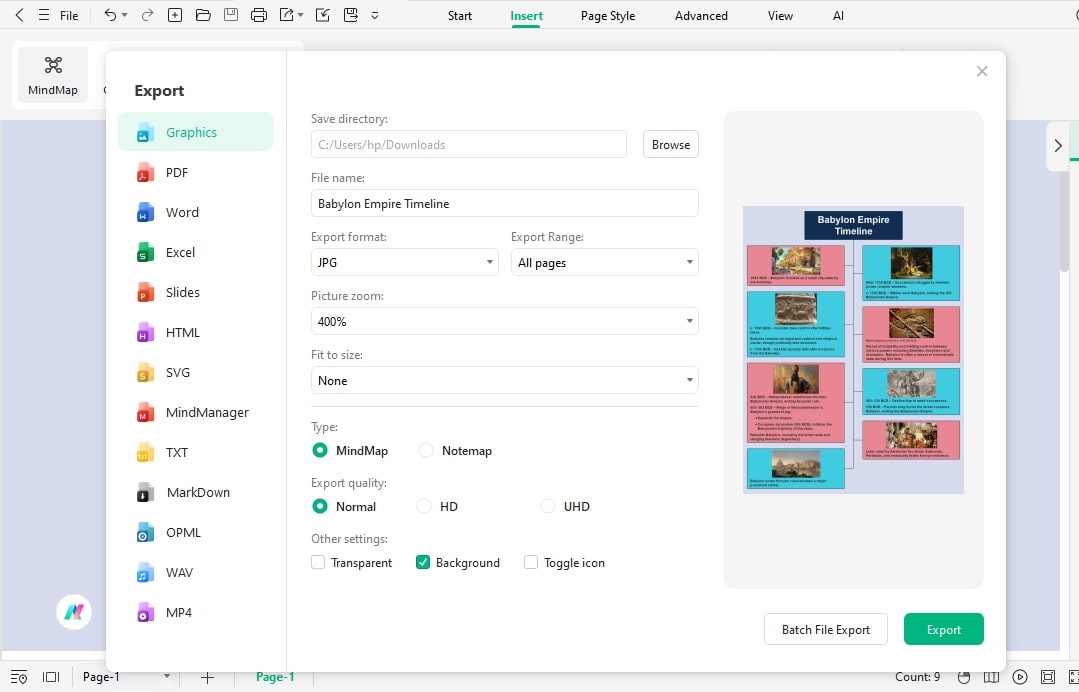The Babylonian Empire is one of the ancient Mesopotamian Empires, better known due to its capital city, Babylon. The empire has brought advancements in Mathematics, astronomy, law, etc.
The timeline of the Babylonian Empire discusses the rise and fall of the empire over time. This guide will discuss key periods, presented in a well-organized timeline, to help understand different histories. Let's check it out!
In this article
Key Events and Periods in the Babylonian Empire
The Babylonian Empire existed in two major periods: the Old Babylonian Empire and the Neo-Babylonian Empire. Both of the periods have their significance. However, the Neo-Babylonian is notable due to the laws and advancements under the rule of King Nebuchadnezzar II. Here is the complete timeline of the Babylonian Empire.
Old-Babylonian Empire or Early Babylon (c. 1894–1595 BCE)
The old Babylonian empire was followed by the decline of the Sumerian Third Dynasty and the Akkadian Empire. Hammurabi was the sixth king of the empire and is known for his efforts to maintain the rule of law in his empire. His era was considered to be the Golden Age.
The code of Hammurabi was introduced, having more than 270 laws regarding labor, religion, prosperity, family, and finance. The law of retaliation was the most famous, and "an eye for an eye" was the main motto of this law.
They adopted the Sumerian culture and their texts, but the empire started to weaken due to a lack of interest after Hammurabi's successors.
The empire disintegrated due to internal issues and external pressures. Finally, the Kassites took over the empire.
Kassite Period & Middle Babylonian Period (c. 1595–1155 BCE)
The Middle Babylonian period was the longest reign of the Kassites. When the Hittites sacked Babylon, a power vacuum was created in the region, causing the Kassites to control the power of the region.
The Kassites were the people of an unknown region and ruled the Babylonian empire for almost four centuries. They brought significant changes to the region to bring a good life and prosperity.
The Kassites moved the capital to Baghdad, but Babylon remained the center hub of their religion. The Kassites built temples and improved the agricultural system by building the longest canals in the area. They also adopted the religion of the locals.
Neo-Babylonian Empire (c. 1595–1155 BCE)
The empire has seen a significant rise under the rule of King Nebuchadnezzar II. He played a crucial role in defeating the Assyrian Empire with his coalition.
Nebuchadnezzar II and his son have played a crucial role in bringing education and the latest technology. He and his sons have built enough infrastructure, including the famous gate of Ishtar and one of the seven wonders of the world, the Hanging Gardens. The people were skilled builders and known for their architectural and agricultural skills.
They learned the art of astronomy and mathematics, which helped them gain knowledge of stars and planets. The era is still being remembered in the modern age, and a lot of references are taken from this era.
Under the rule of Nebuchadnezzar II, the empire managed to expand its territory to Southwest Asia. They invested in their people and helped them grow financially and physically, and educated them to bring prosperity.
Legacy of the Babylonian Empire
Here are a few of the main points of the Babylonian Empire's legacy:
- Rule of Law during the Hammurabi Regime. The "Law of Retaliation" was introduced during his regime.
- They preserved the Sumerian and Akkadian texts for further generations.
- They brought advancements in literature and agriculture, giving people an opportunity to be independent.
- They made significant efforts to educate their people and brought them knowledge of astronomy and mathematics. They use time concepts just like the modern days (60 seconds, 60 minutes).
- They built famous infrastructures in the region. The baked brick and glazed tiles were used to build houses and other important buildings.
- The people of Babylon were the worshipers of Marduk, better known as the chief god of Babylon. They were influenced by the Genesis (Hebrew texts).
- The influence of their knowledge inspired Romans, Persians, Assyrians, and Greeks. The modern era remembers the Babylonian knowledge, and it is often referenced in Biblical and classical literature.
How to Create Such a Timeline
A timeline helps people understand ancient history. How were they built, and what are the causes of the fall? All of this is of great importance for people interested in knowing the roots of their ancestors. However, a timeline makes things easier and quickly helps those who want an overview.
EdrawMind is one of the best timeline makers to create such a timeline. It provides all the tools, templates, and designs to make your work easier. Here are a few of the main features of EdrawMind.
Key Features of EdrawMind
Here are a few of the key features of EdrawMind that can help you understand what it is offering when it comes to creating different diagrams.
- Templates Library: EdrawMind offers a huge library of templates that can help you create, edit, and change the designs according to your needs.
- Multiple Diagram Types: EdrawMind helps us create multiple diagrams, including the fishbone diagram, MindMap, Kanban, Timelines, and Tree diagrams.
- Ready-Made Themes and Styles: EdrawMind offers multiple theme patterns and designs that can help you design better. All you need to do is click them, and your style adjusts to the new ones.
- Multiple Export Options: The quality of your design is adjustable, and you can save your file in any format you like, including PDF, PNG, JPEG, SVG, and many more. You can save the source file as well if there are further changes required.
Step-by-Step Guide to Creating a Babylonian Empire
Here is a step-by-step guide to creating intuitive timelines with the help of EdrawMind. Follow these steps to help yourself.
Step 1Open EdrawMind and Click Create/New MindMap
- Download and install EdrawMind.
- Open EdrawMind and click "Create" to open the empty canvas.

Step 2Edit the Design
- Add text and start putting details, like editing the names for each column.
- Add as much information as needed to make your design clearer.

Step 3Add Images
- Add Images for each element for better clarity.
- Use the toolbar at the top of the screen to make things easier.
- You can also use the drag-and-drop functionality to do that.

Step 4Change Themes/Styles
The themes and styles are changed from the toolbar given on the left-hand side of the screen.
You can change colors and styles according to the styles needed for your timeline.

Step 5Export the File
To save your file, you need to
- export the file in the needed format. There are multiple formats to choose from.
- Don't forget to save the source file for further editing.

That's how it is done. EdrawMind simplifies your work by making it easier to create timelines with impressive designs. If you are willing to make your work easier, use templates to find the best results.
The templates library helps you find ready-made templates that require little editing. Use them to quickly get things done.
Final Thoughts
The Babylonian Empire timeline helps you understand the key events and the rise and fall of the empire. Timelines help us understand the complex histories and their complex concept. EdrawMind helps you create impressive timelines that can simplify your work.
It has all the necessary tools, themes, styles, colors, etc., that can be used to create the best timelines for you. So, if you need a timeline like the Babylonian Empire timeline that can guide your thoughts and help your audience understand the main concepts, try EdrawMind. You will never be disappointed.






